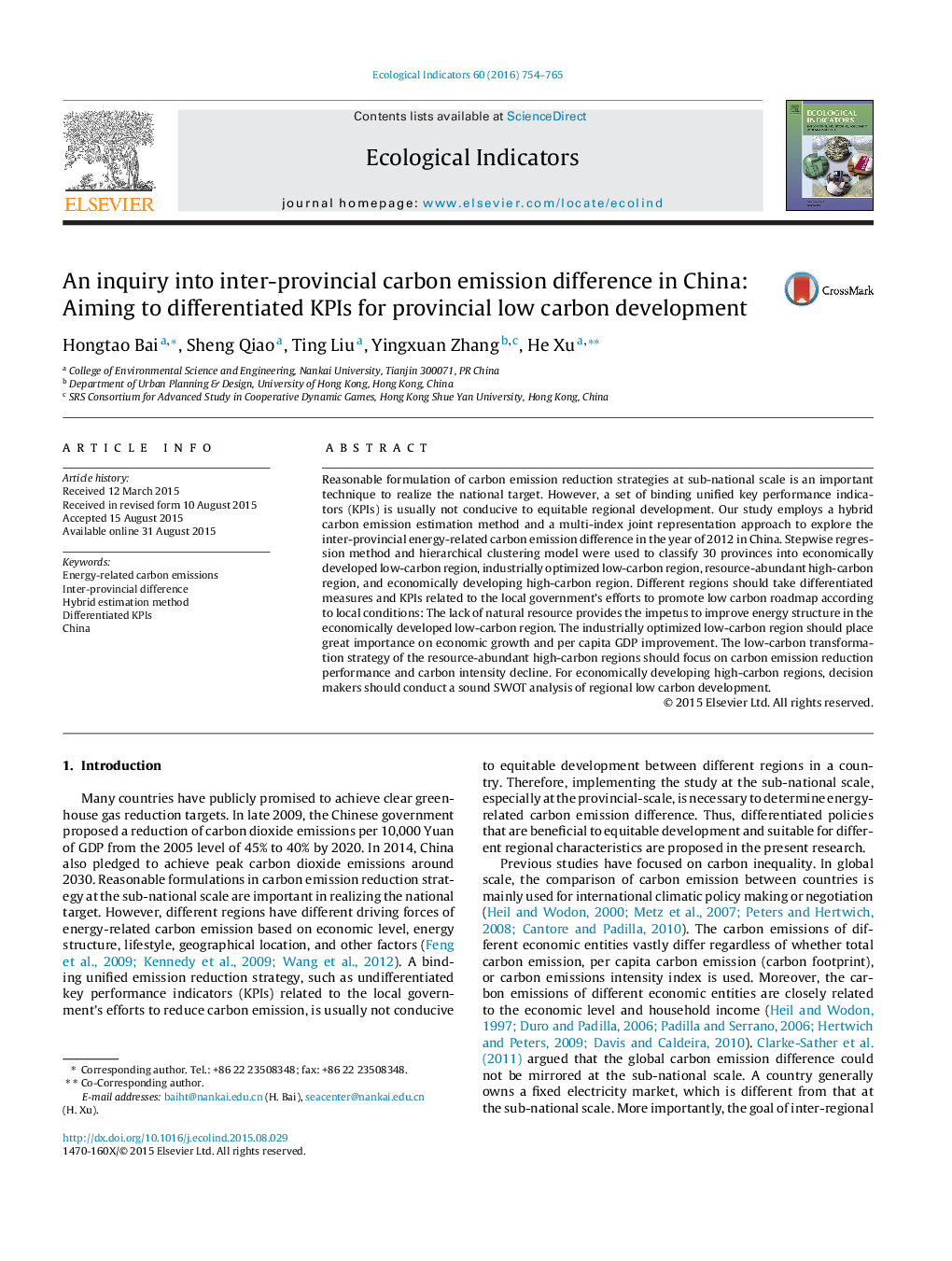| Article ID | Journal | Published Year | Pages | File Type |
|---|---|---|---|---|
| 6294149 | Ecological Indicators | 2016 | 12 Pages |
Abstract
Reasonable formulation of carbon emission reduction strategies at sub-national scale is an important technique to realize the national target. However, a set of binding unified key performance indicators (KPIs) is usually not conducive to equitable regional development. Our study employs a hybrid carbon emission estimation method and a multi-index joint representation approach to explore the inter-provincial energy-related carbon emission difference in the year of 2012 in China. Stepwise regression method and hierarchical clustering model were used to classify 30 provinces into economically developed low-carbon region, industrially optimized low-carbon region, resource-abundant high-carbon region, and economically developing high-carbon region. Different regions should take differentiated measures and KPIs related to the local government's efforts to promote low carbon roadmap according to local conditions: The lack of natural resource provides the impetus to improve energy structure in the economically developed low-carbon region. The industrially optimized low-carbon region should place great importance on economic growth and per capita GDP improvement. The low-carbon transformation strategy of the resource-abundant high-carbon regions should focus on carbon emission reduction performance and carbon intensity decline. For economically developing high-carbon regions, decision makers should conduct a sound SWOT analysis of regional low carbon development.
Keywords
Related Topics
Life Sciences
Agricultural and Biological Sciences
Ecology, Evolution, Behavior and Systematics
Authors
Hongtao Bai, Sheng Qiao, Ting Liu, Yingxuan Zhang, He Xu,
